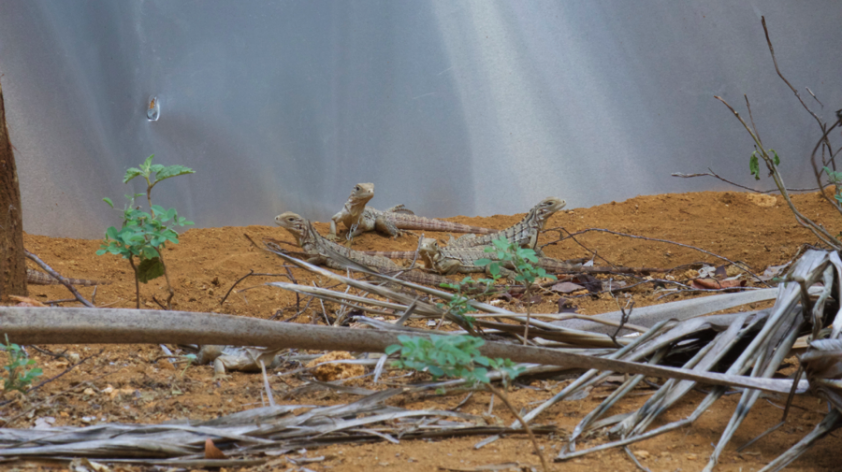
Is anybody out there?
Cyclura nubila caymanensis, aka SIRI (Sister Islands Rock Iguanas) are endemic to the Cayman Islands. More specifically, they can be found only on the Sister Islands of Little Cayman and Cayman Brac. The taxon is listed as Critically Endangered in the IUCN Red List of Threatened Species. As with most rock iguana species, human development and introduced mammalian predators are playing a critical role in the slow but steady decay of SIRI populations.
The last large natural population of these lizards persists on Little Cayman. To better understand the dynamics on this island population a reproductive study was initiated in 2015 by PhD student Jen Moss from Mississippi State University in collaboration with San Diego Zoo Global – Institute For Conservation Research, and the Cayman Islands Department of Environment.
Fieldwork consists of periodic checks of areas female iguanas visit during the egg-laying season. Females of this species nest in May and June and do so by digging underground nests in areas with friable soil, which tend to be concentrated around the island’s perimeter just inland from sandy beaches. Females lay clutches of ~10 to 20 eggs in an air-filled chamber that is excavated underground at the end of a long tunnel. The entrance tunnel is back-filled with soil by the female after laying her eggs. Females often guard their nest for a few days to several weeks after laying eggs to prevent other nesting females from using the same site and potentially harming their eggs.
When nests are identified, we re-excavate the entrance tunnel to reach the egg chamber and collect information on the number of eggs, their size, weight, and whether they present obvious abnormality in shape or texture. When the egg chamber has been reached and the data collected, all eggs are returned to their original position and the nest tunnel is once again filled with soil.
Hatching occurs in August and September. To facilitate the capture of hatchlings, corals made of aluminum flashing are placed on the ground surrounding egg chambers to contain baby iguanas upon their emergence from the underground nest. Over the last three years, approximately 500 hatchling SIRI were captured and processed on Little Cayman after emerging from 52 marked nest sites. Monitoring the growth and survival of these animals over time will provide valuable information on the percentage of hatchlings that reach adulthood and reproduce. This information, known as recruitment rate, will help conservation managers determine the population’s health.













